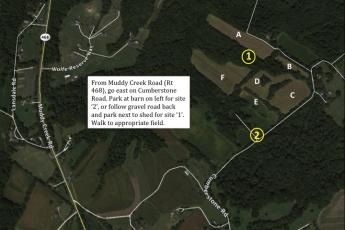Research ProjectBiodiversiTREE
Affiliated Labs
Description
BiodiversiTree Data Authorship Policy
May 7, 2021
Statement on Data Ownership & Authorship Policies for Research at BiodiversiTREE
BiodiversiTREE@SERC is a large-scale, long-term experimental research forest designed to test whether tree diversity impacts ecosystem function at the Smithsonian Environmental Research Center (SERC) in Edgewater, MD. It is the largest tree diversity-ecosystem function experiment in North America, comprised of 70 plots, each 35m x 35m and initially planted in 2013 with 255 trees (totaling approximately 18,000 total trees), on 13 hectares with 3.5 miles of perimeter, and 2 miles of wired environmental sensors taking nearly continuous measurements of soil temperature/moisture and air temperature/humidity.
The exceptional size of the BiodiversiTREE experiment lends to the realism of the treatments and makes it an attractive experimental venue, but it requires significant resources to operate. The BiodiversiTREE PI (John Parker) receives no federal funding to operate the site, other than his salary and salary for one part-time technician, and research funds are generated entirely from external sources. Given the significant resources needed to operate the experiment, the purpose of this document is to clearly articulate the proper steps for effective research collaboration at the site, appropriate data curation, and accurate scientific credit for the researchers who created and continue to operate this research infrastructure. Below we articulate these expectations clearly to remove ambiguity prior to initiating any new collaborative research at the site.
- NEW RESEARCH AT BIODIVERSITREE
First, we strongly encourage new research at BiodiversiTREE that complements our existing goals! However, all research at the site must be first proposed to the BiodiversiTREE PI (John Parker) before initiation. This is to ensure that new research does not interfere with the project’s ultimate goals nor with the experiments of other collaborators.
- MANIPULATIVE RESEARCH
Manipulative (i.e., 'destructive') research can only be completed in the outer three 'buffer' rows of each plot. This is meant to minimize disruption to the interior of each plot where more intensive measurements on tree growth and survival are being conducted.
- DATA OWNERSHIP
Data collected by researchers funded by the Smithsonian are owned by the Smithsonian, thus these datasets (and meta-data) must be stored on the Smithsonian network where they will be curated by lab head tech Jamie Pullen. Data collected by external researchers can be stored externally to the Smithsonian, but we would appreciate access to versions of these data (and meta-data) when appropriate (e.g., either before publication where SI networks would effectively operate as a 'data backup', or after publication once data are finalized, whatever seems most appropriate to the external collaborator). Our goal here is to simply have a comprehensive record of all data taken at the site should complementary approaches arise in the future. We agree to not share or use externally collected data without consent of the original data owners.
- AUTHORSHIP POLICY
We do not expect authorship on every paper generated from the site, but we do expect to be included in the discussion before any posters or papers are submitted so we can judge whether authorships versus acknowledgements are warranted. For example, we anticipate that projects utilizing the treatment diversity gradient as an experimental backbone would likely warrant co-authorship for the BiodiversiTREE PI (Parker) given that these results utilize his intellectual effort in designing, installing, and operating the experiment. Co-authorship might also be warranted for BiodiversiTREE head tech (Pullen) if she is significantly involved in data collection and/or analysis. Similarly, projects leveraging key datasets (with or without respect to the diversity gradient) like tree growth, soil conditions, or the environmental sensors, would likely entail coauthorships given the intellectual and labor infrastructure required to maintain these datasets. Similarly, authorships may be warranted for past lab members or affiliates, depending on the circumstances and data used, as many interns, graduate students, postdoctoral associates, volunteers, and affiliated PIs have contributed to this project since its inception. Projects simply sampling a small part of the experiment on a limited basis (e.g., not utilizing the tree diversity manipulations nor utilizing our datasets) would likely warrant acknowledgements, but must still be disclosed to the BiodiversiTREE PI (Parker) to ensure existing project goals or collaborations are not compromised (as described above).
Both the BiodiversiTREE PI and head technician make it clear that when co-authorship is required, they will participate in the paper development as needed, including assisting with data analysis and writing. The authorship order should be discussed beforehand and revisited when needed throughout the project, but we anticipate this being done using ordinary rules signifying each author’s roles in the project.
John D. Parker, Ph.D., Senior Scientist, Research Ecologist
Smithsonian Environmental Research Center, parkerj@si.edu, https://serc.si.edu/labs/terrestrial-ecology
Directions to BiodiversiTree


